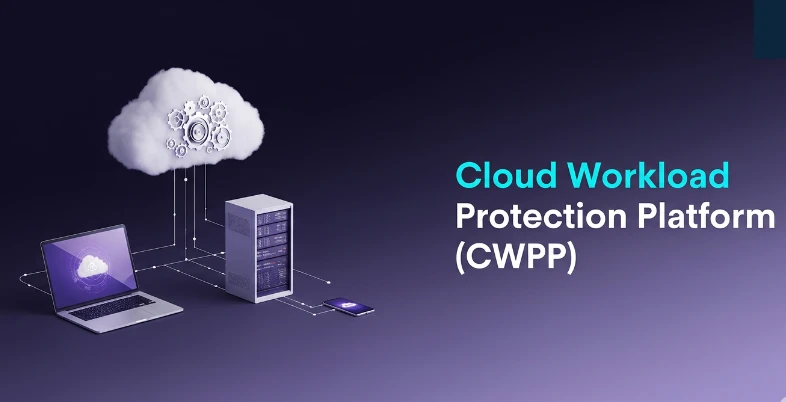In 2025, more than 85% of businesses utilize multi-cloud or hybrid cloud setups, which also increases the likelihood of cyberattacks. Experts predict that cybercrime could cost the world $10.5 trillion every year by 2025. Recent reports show that over 45% of all data breaches now come from cloud environments.
That’s why Cloud Workload Protection Platforms (CWPPs) are so important. They help companies keep their cloud workloads — such as virtual machines, containers, and serverless applications — safe from threats.
In this article, we’ll look at the Top 15 CWPPs in 2025 that can help protect your business in the cloud.
Key Benefits of Using a CWPP
- Complete Workload Coverage: A good CWPP protects all types of cloud workloads, including virtual machines, containers, and serverless functions, ensuring no part of your infrastructure is left exposed to threats.
- Continuous Vulnerability Management: These platforms scan your workloads continuously for misconfigurations, unpatched vulnerabilities, malware, and suspicious behavior, so you can fix issues before attackers find them.
- Helps Meet Compliance Needs: CWPPs help organizations stay compliant with standards like PCI DSS, HIPAA, and GDPR by offering built-in policy templates, audit trails, and easy reporting tools for security teams.
- Real-Time Threat Detection & Response: Modern CWPPs detect threats as they happen and can automatically respond by isolating infected workloads or blocking malicious processes, reducing the impact of attacks.
- Unified Security Management: With one platform for multiple clouds, security teams can monitor, manage, and enforce policies centrally, saving time and avoiding security gaps caused by scattered tools.
How to Pick the Best CWPP for Your Company
- Multi-Cloud and Hybrid Support: Make sure the CWPP works seamlessly with all the cloud providers you use, such as AWS, Azure, Google Cloud, or even your on-premises data centers, so you don’t have blind spots.
- CI/CD Pipeline Integration: Choose a solution that easily plugs into your development workflow. This lets you scan code, containers, and images automatically during build and deployment to catch issues early.
- Strong Runtime Protection: Good CWPPs do more than just scanning — they monitor workloads in real time to detect abnormal activities or zero-day attacks, then automatically enforce policies to block threats.
- Flexible Deployment Options: Some CWPPs use lightweight agents, while others offer agentless scanning. The right option depends on your workloads and your tolerance for performance impact and complexity.
- Vendor Support and Cost Efficiency: Look for transparent pricing, clear documentation, and responsive customer support. A reliable vendor helps you deploy quickly and scale protection as your cloud usage grows.
15 Best Cloud Workload Protection Platforms
1. Palo Alto Networks Prisma Cloud
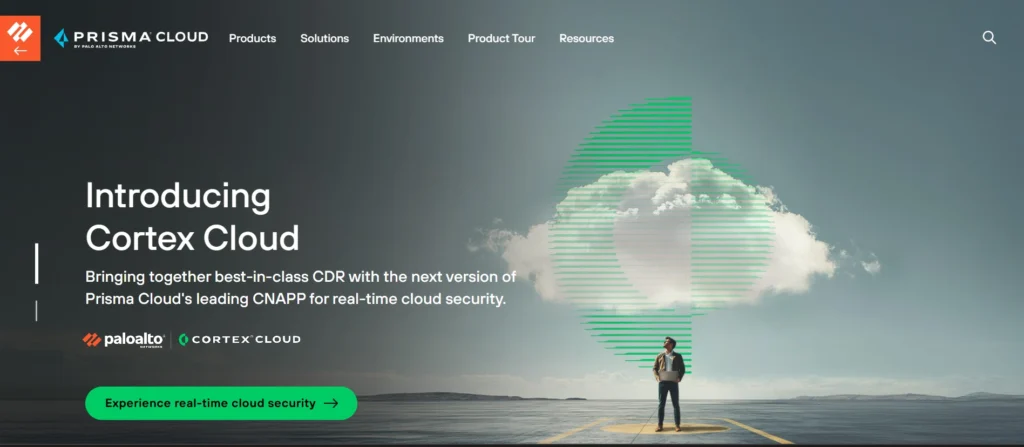
Website: https://www.paloaltonetworks.com/prisma/cloud
Palo Alto Networks Prisma Cloud is one of the industry’s most comprehensive Cloud Workload Protection Platforms (CWPP). It provides full-stack security for applications, data, and the entire cloud-native technology stack. Prisma Cloud combines features like vulnerability management, compliance monitoring, runtime defense, and threat detection into a single, unified solution. It supports hybrid and multi-cloud environments, including AWS, Azure, GCP, and Kubernetes, giving security teams deep visibility and control over all workloads.
Prisma Cloud’s powerful runtime protection continuously monitors workloads for suspicious behavior, exploits, or configuration drift. With its automated policy enforcement, developers and DevOps teams can focus on innovation while ensuring that security is integrated seamlessly across the software development lifecycle. Prisma Cloud’s dashboards and reporting capabilities also make it easy for organizations to maintain regulatory compliance in real time.
Top Features:
- Comprehensive runtime protection
- Vulnerability management and compliance monitoring
- Integrated CI/CD pipeline security
- Support for containers, serverless, and VMs
- Multi-cloud and hybrid cloud coverage
Pricing:
- Available on request
2. CrowdStrike Falcon Cloud Workload Protection
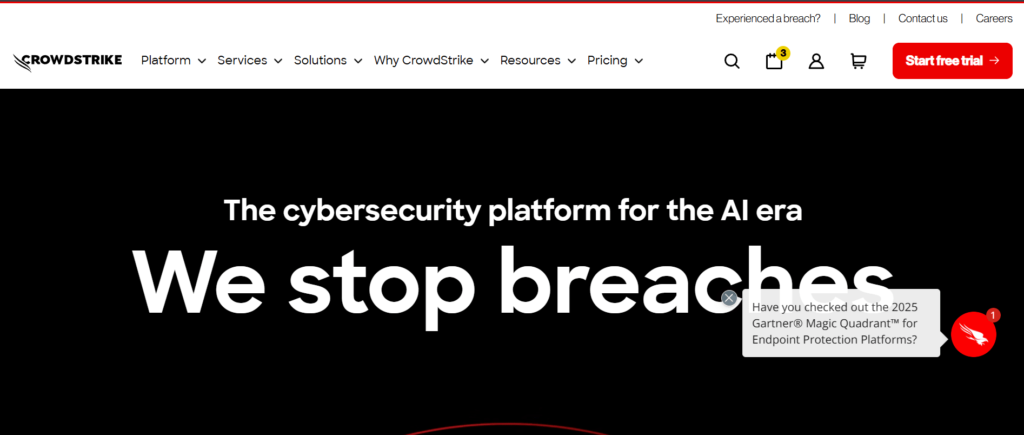
Website: https://www.crowdstrike.com/en-us/platform/
Falcon Cloud Workload Protection, offered by CrowdStrike, provides advanced workload protection through threat prevention, detection, and response features for workloads in private, public, and hybrid clouds. It is based on the widely successful Falcon platform and provides world-leading threat intelligence centered on CrowdStrike-bm-crowdStrike-ef-snd_db, protecting containers, virtual machines, and Kubernetes deployments without affecting performance. With cloud-native analytics merged with lightweight agent technology, Falcon offers a view of real-time activity present within the workloads and the threats.
Behavioral AI continuously learns at millions of endpoints across the world, so the very fact that you deploy your workloads in a cloud is taken care of by proactive defense against new threats and old. Other features include automatic policy enforcement, real-time tracking, and forensic-quality instrumentation tools to allow teams to find problems quicker and respond accordingly on the platform. Falcon only requires one lightweight agent and a single central console to be deployed easily at scale.
Top Features:
- AI-powered threat detection and prevention
- Single lightweight agent for all workloads
- Real-time monitoring and alerting
- Detailed forensic investigation tools
- Seamless integration with CI/CD pipelines
Pricing:
| Go | Pro | Enterprise |
| $59.99/yr | $99.99/yr | $184.99/yr |
3. Trend Micro Cloud One – Workload Security
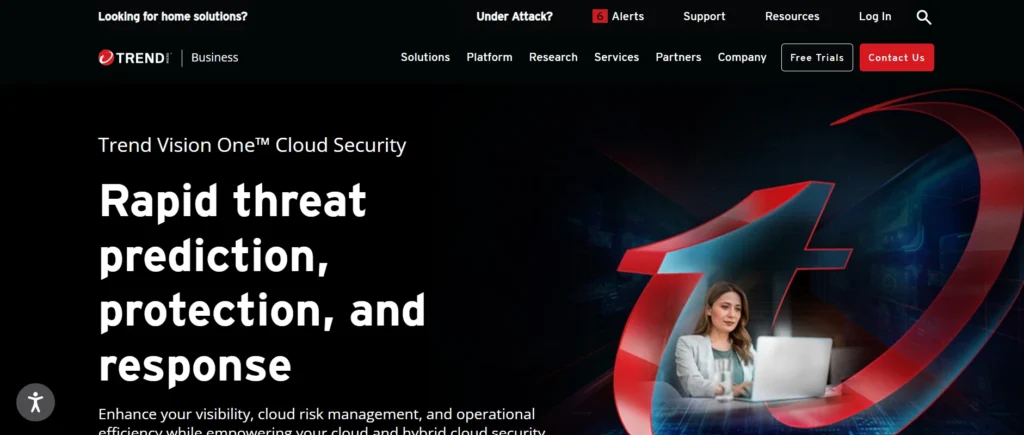
Website: https://cloudone.trendmicro.com/
Trend Micro Cloud One-Workload Security is designed to fully safeguard virtual, cloud, and container workloads as well as physical workloads. It automatically detects new workloads and enforces similar security policies such that even flowable, auto-scaling cloud environments are secure. It has intelligent malware protection, intrusion stoppage, and application control, which hinders the arrival of threats before they affect your workloads.
It has the option to connect to large cloud service providers such as AWS, Azure, and Google Cloud, and its deployment and management are simplified by policy-based automation. At the same time, Workload Security also assists organizations with compliance creation and enforcement, with reporting and auditing capabilities. It is an enterprise-trusted cloud-native security protecting important applications worldwide with its comprehensive workload coverage and powerful threat intelligence.
Top Features:
- Automatic workload discovery and protection
- Intrusion prevention and application control
- Malware protection and vulnerability shielding
- Compliance and audit reporting
- Integration with major cloud platforms
Pricing:
- Available on request
4. Microsoft Defender for Cloud
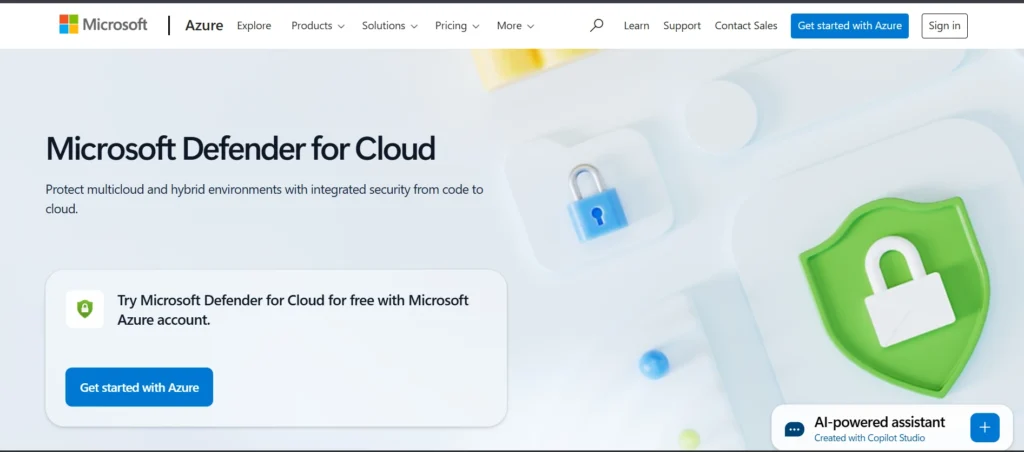
Website: https://azure.microsoft.com/en-us/products/defender-for-cloud/
Microsoft Defender for Cloud is a powerful CWPP that can enable organizations to protect their multi-cloud and hybrid frameworks without hassle. It offers centralized security and threat protection of workloads in Azure, AWS, GCP, and on-premise data centers. Defender for Cloud constantly evaluates your cloud resources, determines misconfigurations, and provides actionable suggestions on how you can address them in order to augment your security positioning.
Among its most distinctive qualities are workload protection, a feature that deals with VMs, containers, databases, and storage, and presents real-time threat protection/response. It is based on the power of analytics and threat intelligence by Microsoft’s global security network to provide a platform that detects prevailing threats and malicious activities. Defender for Cloud is tightly integrated with Azure services, and it offers a dashboard that allows computing the position on compliance, threat monitoring, and automation of remediation jobs.
Top Features:
- Multi-cloud and hybrid security posture management
- Real-time threat detection and response
- Integrated compliance tracking
- Automated remediation suggestions
- Deep integration with Azure and other cloud providers
Pricing:
- Available on request
5. SentinelOne Singularity Cloud
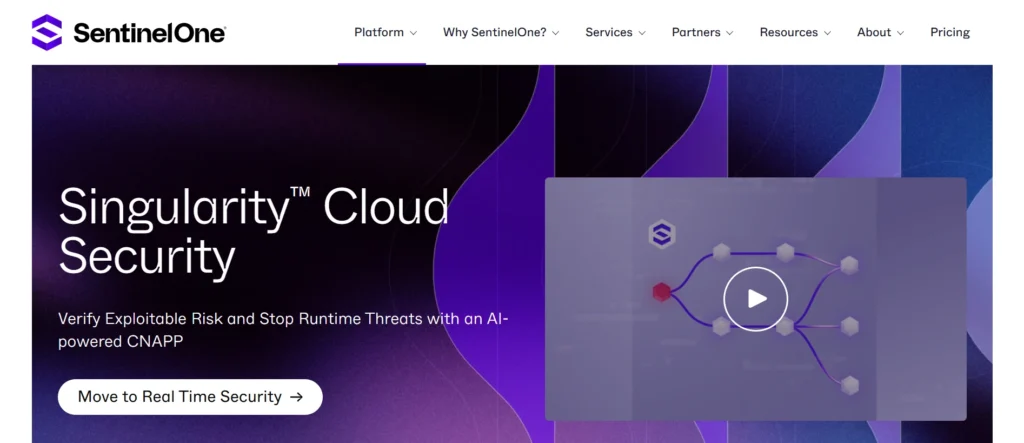
Website: https://www.sentinelone.com/platform/cloud-security/
The SentinelOne Singularity Cloud is the AI-based CWPP that was developed to cover the protection of workloads in cloud-native, containerized, and hybrid environments. It can provide autonomous protection at runtime, EDR (Endpoint Detection and Response), and potent threat-hunting devices as a sealed platform. With SentinelOne technology, the autonomous agent is able to respond to threats in real-time and without human interaction, slashing response time and limiting any possible repercussions.
The one-of-a-kind Storyline technology on the platform auto-correlates security in real-time into intelligent, contextualized stories that allow security teams to investigate and respond more quickly. SentinelOne Singularity Cloud provides end-to-end coverage of Kubernetes, Docker, and VM-based workloads to provide DevSecOps teams with the tools they require to introduce security into every phase of the application lifecycle. Its single-agent architecture consumes fewer overheads and complexity, and therefore, it is a good option in modern cloud-first organisations.
Top Features:
- Autonomous threat detection and response
- EDR and advanced threat hunting
- Storyline technology for a clear attack context
- Support for containers, VMs, and hybrid workloads
- Seamless DevSecOps integration
Pricing:
| Complete | Commercial |
| $179.99 per endpoint | $229.99 per endpoint |
6. Wiz
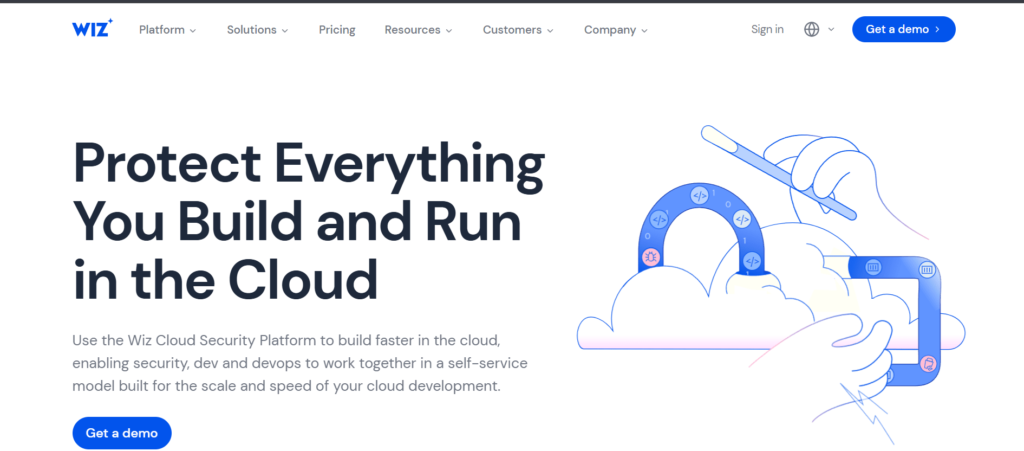
Website: https://www.wiz.io/
Wiz has rapidly emerged as a favorite CWPP for organizations seeking a modern, agentless approach to cloud workload protection. Wiz scans the entire cloud environment — across AWS, Azure, GCP, and Kubernetes — without deploying agents, reducing friction and complexity for security teams. It maps your cloud environment, detects misconfigurations, vulnerabilities, secrets, malware, and identity risks, then prioritizes issues based on risk context and exposure paths.
A key advantage of Wiz is its “Security Graph,” which provides a clear, visual map of how risks relate to workloads, identities, and network exposure. This context-rich approach helps security teams focus on the risks that actually pose the highest threat. Wiz’s easy integration with CI/CD pipelines also helps developers catch security gaps early in the development cycle, ensuring continuous, proactive workload protection.
Top Features:
- Agentless cloud workload scanning
- Visual Security Graph with risk context
- Misconfiguration, vulnerability, and malware detection
- Identity and secret exposure mapping
- CI/CD integration for DevSecOps
Pricing:
- Available on request
7. Check Point CloudGuard
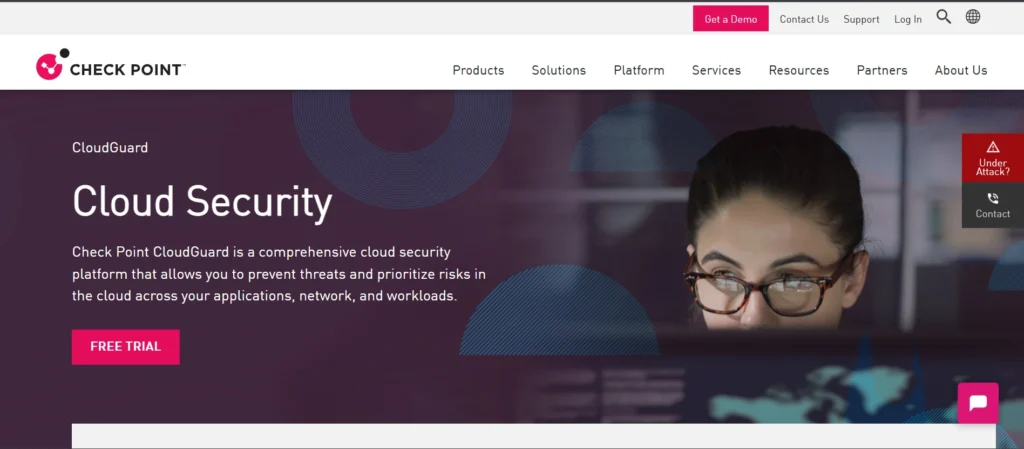
Website: https://www.checkpoint.com/cloudguard/
Check Point CloudGuard provides a full set of security capabilities to workloads, containers, serverless functions, and infrastructures in multi-cloud environments. CloudGuard gives companies all-in-one threat prevention, posture monitoring, and run-time security. It keeps discovering assets, evaluating configurations, and implementing security policies on AWS, Azure, GCP, Kubernetes, and OpenShift.
The intelligence that is provided by the ThreatCloud AI of CloudGuard stops zero-day attacks on workloads and exploits them in real-time. It includes micro-segmentation and firewall muscles designed to keep workloads isolated and stop the spread of threats a lateral manner. By incorporating CloudGuard into the CI/CD process, DevOps teams will be able to scan and check policies on deployment to provide cohesive security throughout the code stack to the runtime of the Cloud.
Top Features:
- Runtime protection for workloads and containers
- Continuous posture management and compliance
- Real-time threat intelligence (ThreatCloud AI)
- Micro-segmentation and firewall controls
- CI/CD integration and automation
Pricing:
- Available on request
8. Orca Security
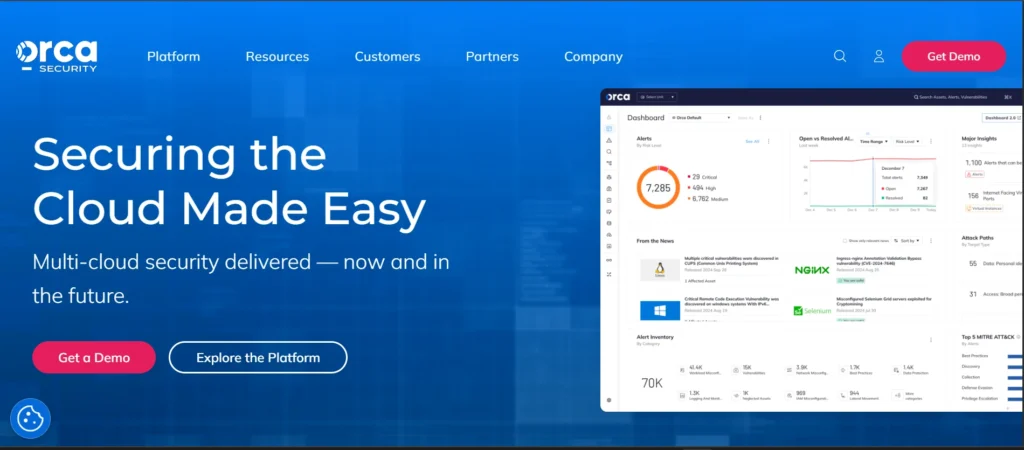
Website: https://orca.security/
Orca Security is an agentless CWPP that combines novel SideScanning technology to deliver extensive and profound security protection of cloud workloads. A scan of cloud configuration, workload runtime, and data at rest will provide full-stack visibility of AWS, Azure, and GCP with Orca. It is agentless, deployment is easy, and it does not affect the performance of any production workload.
Orca’s managed data model mitigates cloud risks in misconfiguration, vulnerability, malware, and identity risk, where the most serious threats are prioritized. The Attack Path Analysis given in the platform indicates how trivial-looking problems can be linked together to produce attack paths that can be exploited. This assists security teams in dealing with high-impact threats before they occur. Orca also offers in-line regulatory checks and comprehensive reporting as well.
Top Features:
- Agentless SideScanning™ technology
- Full-stack workload visibility and risk prioritization
- Attack Path Analysis for contextual threat insights
- Malware detection and data-at-rest scanning
- Continuous compliance reporting
Pricing:
- Available on request
9. Lacework
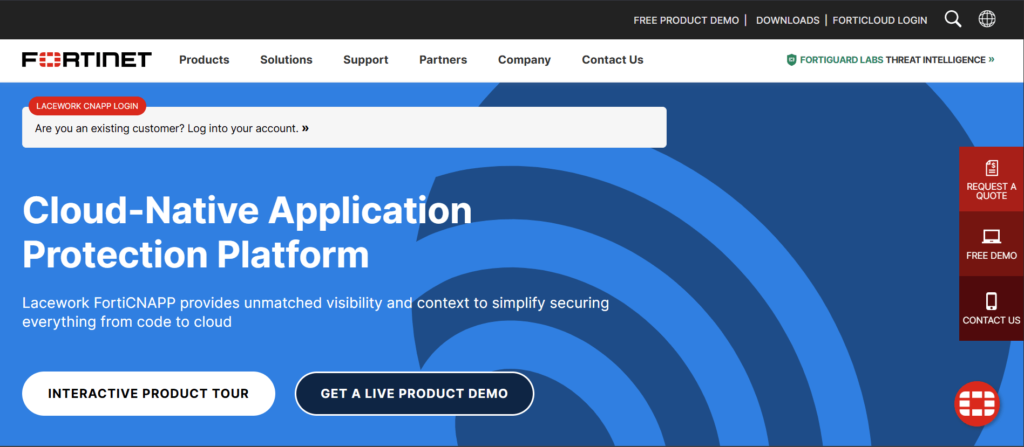
Website: https://www.lacework.com/
The Lacework is an automated and data-driven CWPP that integrates both cloud security posture management (CSPM tools) and workload protections in one unified platform. It is a patented Polygraph Data Platform that automatically constructs behavioral models of workloads, containers, and Kubernetes clusters to identify deviations and anomalous behavior occurring in the background. The agentless and agent-based features of Lacework provide such teams with flexibility depending on the needs of their environment.
Unlike other solutions, Lacework provides security teams with full-scale security controls and 24/7 zero-trust detection of threats running in real-time, vulnerability scans, and extensive forensic searching capabilities. Its natural user interfaces present prioritised alerts and deep context to enable teams to easily get a grip on the scale and magnitude of security incidents. The DevSecOps teams also enjoy integrations with popular CI/CD tools, which allow the automation of security early in the development phase.
Top Features:
- Polygraph Data Platform for behavioral analysis
- Agentless or agent-based deployment flexibility
- Real-time anomaly detection and forensics
- Container and Kubernetes security
- DevSecOps integrations for CI/CD
Pricing:
- Available on request
10. Sysdig Secure
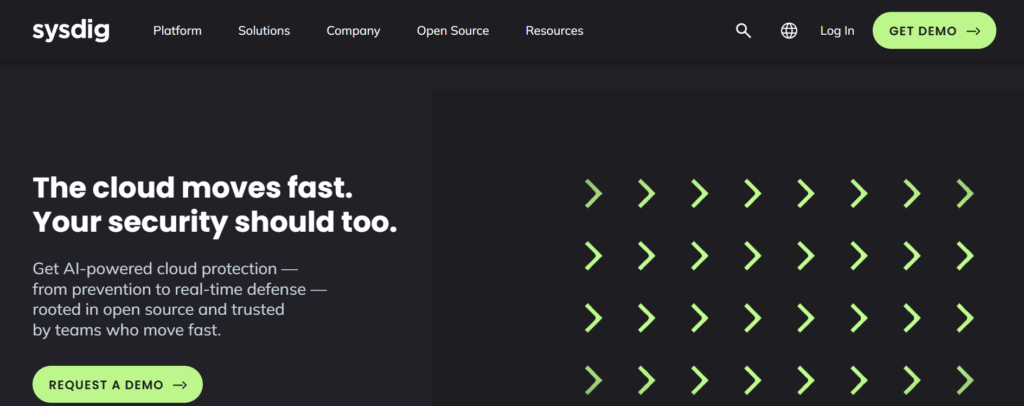
Website: https://docs.sysdig.com/en/
With a focus on runtime security, container security, and container workload protection, Sysdig Secure is a successful CWPP. Sysdig Secure was created to give deep observability and continuous monitoring of containers, hosts, and cloudless workloads through its design in cloud-native settings. Its proprietary Falco open-source runtime security engine measures and tracks suspicious activities and threats on the fly and has out-of-the-box rules that secure Kubernetes and containers.
Sysdig Secure also includes powerful vulnerability scanning, compliance checks, and risk-based insight to production images and workloads. Its policy enforcement at runtime can automatically reject malicious activity, and it can be linked to DevOps pipelines to scan the images before the deployment. Sysdig’s unified platform offers a single point of view for protecting cloud-based workloads and orchestrators.
Top Features:
- Falco-powered runtime threat detection
- Container and Kubernetes workload protection
- Vulnerability scanning for images and registries
- Compliance validation and reporting
- DevOps integration for CI/CD pipelines
Pricing:
- Available on request
11. Sophos Cloud Workload Protection
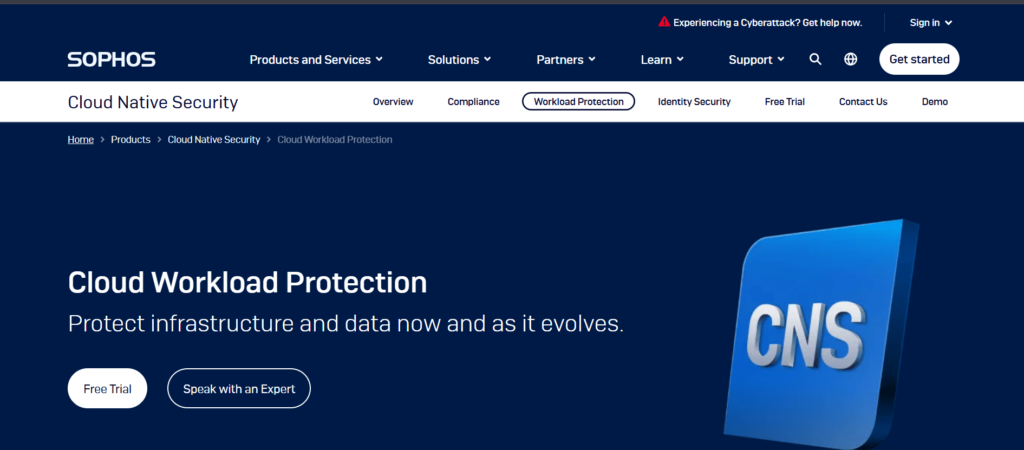
Website: https://www.sophos.com
Sophos Cloud Workload Protection is engineered to protect all workloads in hybrid and multi-cloud environments simply and efficiently. Comprising threat detection, vulnerability management, and runtime protection vulnerability management, Sophos applies analytics powered by AI and real-time threat intelligence in its SophosLabs to protect containers and VMs as well as serverless functions. It has a lightweight low-agent that can be deployed without any difficulty, and gives complete visibility on workload activities.
One of Sophos’ main advantages is its synchronized security. It exchanges threat information between endpoints, servers, and cloud workloads so that the threats can be responded to faster and more coordinated. Automated patching, policy enforcement, and compliance reporting are also provided in the platform so that the platform is security-conscious without difficulties by security teams. Sophos Cloud Workload Protection runs with simple dashboards and a small overhead that has been tried and proven in organizations of both small and large dimensions.
Top Features:
- AI-powered runtime protection
- Automated vulnerability management and patching
- Synchronized threat intelligence across endpoints and workloads
- Real-time visibility and compliance reporting
- Support for containers, VMs, and serverless
Pricing:
- Available on request
12. Fortinet FortiCWP
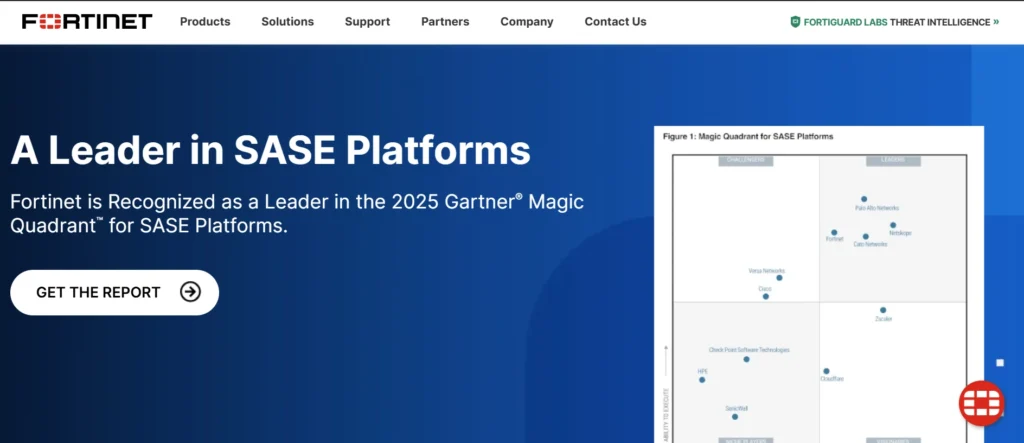
Website: https://www.fortinet.com/
The Fortinet FortiCWP is a complete product that helps to bring cloud workloads within the scope of the already famous Fortinet security. FortiCWP provides strong protection of cloud applications and workloads using continuous monitoring, superior threat detection, and compliance enforcement on automation. It is fully compatible with big cloud providers, such as AWS, Google Cloud, and Azure.
To assist security experts in identifying threats in real time, FortiCWP uses advanced analytics to identify unusual behavior in user workloads and activities. It has policy-driven controls that automatically apply best security practices and compliance enforcement, and reduce manual effort and Configuration errors. Fortinet Security Fabric is also adoptable on FortiCWP, where unified visibility and coordinated defenses are ensured on both on-premises and cloud stores.
Top Features:
- Continuous monitoring and advanced threat analytics
- Automated policy enforcement and compliance checks
- Seamless integration with Fortinet Security Fabric
- Support for multi-cloud and hybrid deployments
- Detailed workload activity reporting
Pricing:
- Available on request
13. Aqua Security
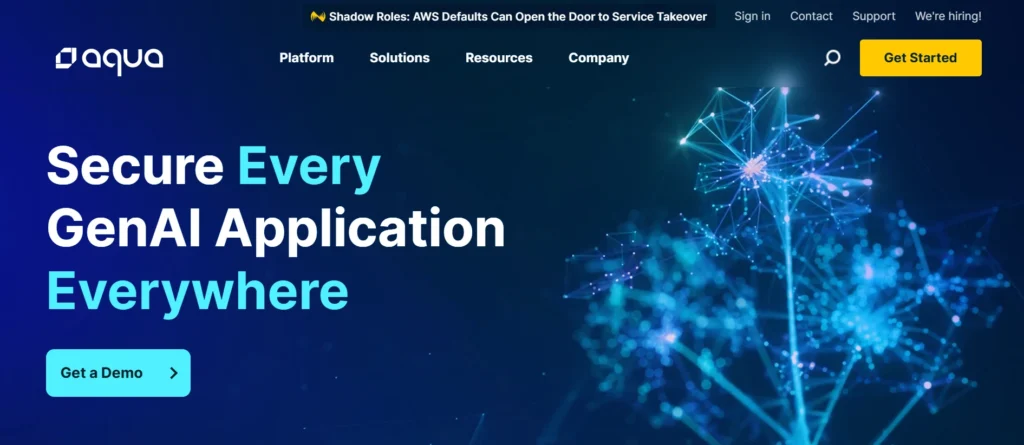
Website: https://www.aquasec.com/
Aqua Security is a pioneer in securing cloud-native workloads with deep expertise in container and Kubernetes security. Aqua’s CWPP provides end-to-end protection — from image scanning and vulnerability management to runtime defense and secrets management. It secures workloads across the entire application lifecycle, from build through runtime, with policy-driven controls and automatic enforcement.
Aqua’s runtime protection uses behavioral profiling to detect anomalies, block unauthorized actions, and prevent privilege escalations within containers and serverless functions. Its integrations with major orchestration platforms like Kubernetes and OpenShift make it an essential solution for teams running large-scale, cloud-native applications. Aqua’s rich dashboards and compliance features help teams meet regulatory requirements with ease.
Top Features:
- Container, serverless, and Kubernetes workload protection
- Image scanning and vulnerability management
- Behavioral profiling for runtime defense
- Secrets management and policy controls
- Seamless CI/CD pipeline integrations
Pricing:
- Available on request
14. VMware Carbon Black Cloud Workload
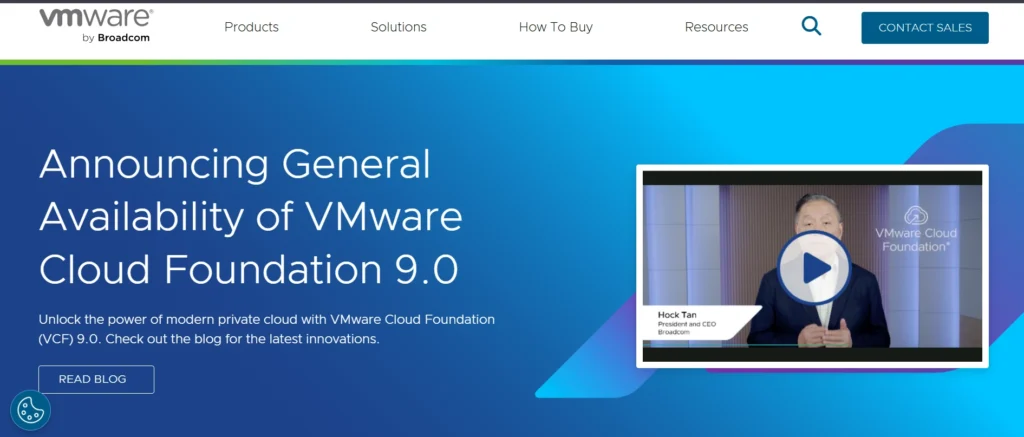
Website: https://www.vmware.com/
VMware Carbon Black Cloud Workload enables high-fidelity workload protection with the power of strong integration with virtualized and cloud-native platforms provided by VMware. Its vulnerability assessment, workload hardening, and workload runtime threat detection are done in a single platform, which is designed to be used in modern data centers and cloud deployments. It offers a sensor that is lightweight to view load granularity without complications.
Carbon Black Cloud Workload has constant detection around processes and file activities to identify suspicious activities to prevent attacks in real time. It can be integrated with VMware vSphere and Tanzu to ease deployment and make the security of virtual machines and containers easier. Security teams are provided with high-potential EDR capabilities, behavioral analytics, and automated features that shorten the time from detection to response.
Top Features:
- Real-time threat detection for workloads
- Vulnerability assessment and workload hardening
- EDR and behavioral analytics
- Deep integration with VMware vSphere and Tanzu
- Automated policy enforcement
Pricing:
- Available on request
15. IBM Security Cloud Pak for Security
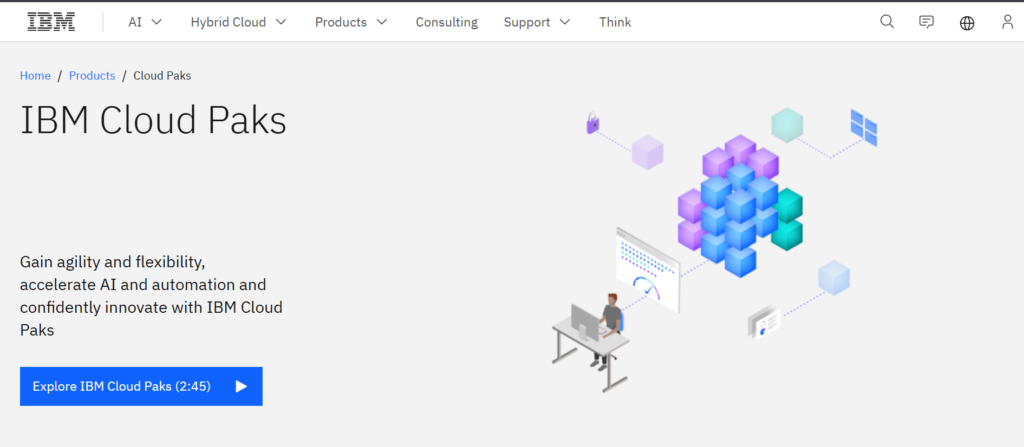
Website: https://www.ibm.com/products/cloud-paks
The IBM Security Cloud Pak for Security is an adaptable CWPP solution, and it is part of the IBM integrated security package that provides CWPP solutions in hybrid cloud search events. It presents insight and safeguards for workloads that run in on-premises information centers, personal clouds, and open clouds, such as AWS, Azure, and GCP. Cloud Pak allows automating security teams so that they can be more effective in detecting threats within a short period and reacting to those threats effectively.
The platform combines vulnerability management, threat intelligence, and workload compliance monitoring. It also integrates with the IBM QRadar to provide a high degree of analytics and also integrates with automation playbooks to orchestrate responses to globally deployed cloud workloads. The open architecture of Cloud Pak enables easy integration to existing tools and enables organizations to modernize their workload security without having to manage to rebuild their stack.
Top Features:
- AI-powered threat detection and automated response
- Unified view of multi-cloud workloads
- Integrated vulnerability and compliance management
- Support for hybrid and multi-cloud deployments
- Open architecture with third-party integrations
Pricing:
- Available on request
Conclusion
In conclusion, organizations rely heavily on the cloud to manage their daily operations, and cloud security is more crucial than ever. By selecting the appropriate Cloud Workload Protection Platform (CWPP), you can defend your data, containers, and apps against modern threats. The top CWPPs help your teams identify risks, resolve issues quickly, and maintain industry compliance, allowing you to focus on growing your business with confidence.
FAQs
Q. Why do I need a CWPP for my business?
A CWPP helps keep your cloud environments safe by finding misconfigurations, detecting malware, blocking suspicious activities, and ensuring you meet security standards.
Q. How does a CWPP work?
A CWPP continuously monitors your cloud workloads, scans for risks, and uses real-time protection to stop attacks. Some platforms use agents, while others work agentlessly to reduce complexity.
Q. Can a CWPP help with compliance?
Yes, many CWPPs include tools that help your business follow industry regulations like PCI DSS, HIPAA, or GDPR by providing audit trails, policy checks, and detailed compliance reports.
